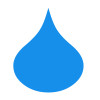Sewage and Wastewater Treatment Process

Sewage or wastewater originates in toilets, sinks and bathtubs as people continue through their daily lives. This wastewater goes into a drain that is connected to the municipality’s large sewer pipe that is often situated underneath roads. This leads to a much larger system that directs the sewage to a treatment center. The wastewater is then subjected to its first stage. This stage is a screening process that removes objects that are large as well as smaller, grit-sized waste. However, this stage is seen as screening and not as a treatment phase.
The next stage is the initial treatment phase. It is in this stage that human waste is separated from the screened sewage. This separation is achieved by diverting the screened wastewater into large circular holding tanks. The holding process allows the solids to settle to the bottom of these tanks. This settled gunk is referred to as sludge. The sludge is removed by massive scrapers that are situated in the tank’s floor, and they scrape the sludge continuously into the center of the tank. The sludge is then taken from the center of the tanks with pumps. The remaining water is then diverted into its secondary treatment phase.
The secondary treatment phase occurs when the water is released into large rectangular tanks. These tanks are designed to facilitate aeration and referred to as aeration lanes. The aeration lanes utilizes bacteria to further breakdown the small sludge material that has inadvertently escaped the screening and scraping process. The bacteria growth is maximized with the addition forced air. This creates an environment that is conducive to bacteria growth, but this bacteria load also adds additional sludge into the treated wastewater. In order to rid the water of this sludge, the water is then directed its final treatment stage.
This final stage includes placing the water into an additional settlement tank to rid the treated water of the added bacterial sludge. These holding tanks include the scrapers that push the sludge into the middle of the circular tank to be pumped out. At this stage, the water is free of most particulates and harmful substances. However, it is then directed into filtering sand beds to completely remove all additional particles. At this stage, the water is clean enough to be directed into large bodies of water. These bodies of water are most often rivers.
